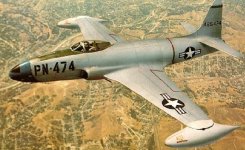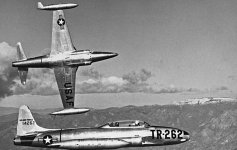Soviet Bottle Rocket
Like all aircraft the MiG-25 is an arrangement of compromises. The goal was to go as fast as possible, as high as possible to act as a point defense interceptor. The Soviets were wary of the supersonic B-70 and other high altitude, high speed penetrator threats under development. The MiG-25 effectively countered the threats that never materialized, a triumph of Soviet central planning. That's not to say that the MiG-25 was not capable. It was the second fastest production military aircraft, exceeded only by our SR-71. All that speed came at a cost. The early engines were like bottle rockets with 50 to 100 hour service lives, later extended to 1,000 hrs. Soviet economic limitations held the Tumansky R-15BD-300 engines to the crudest of designs, burning enormous amounts of fuel and narrowly optimized for high altitude, high speed operation. Incredibly, they were single shaft turbojets with fixed, non-cooled stators and no internal blade cooling. The power turbine was a single stage. The engine made incredible power by using fuel guzzling some afterburning in most operational modes except subsonic.
Speed excursions over Mach 3 were possible, but at the cost of immediate engine replacement, a Cold War bottle rocket akin to the German Me-163 Komet. It did manage to shoot down a few U.S. jet aircraft in Middle East scuffles, but allowances must be made for pilotage.
BTW, my guess for those weird cruciform thingies in the inlet ducts is spargers for fire suppression liquid. Every part of the Mig-25 ran hot, especially the engines. They could be straightening vanes or hot wire anemometer flow measurement probes. I love aeronautical puzzles.



